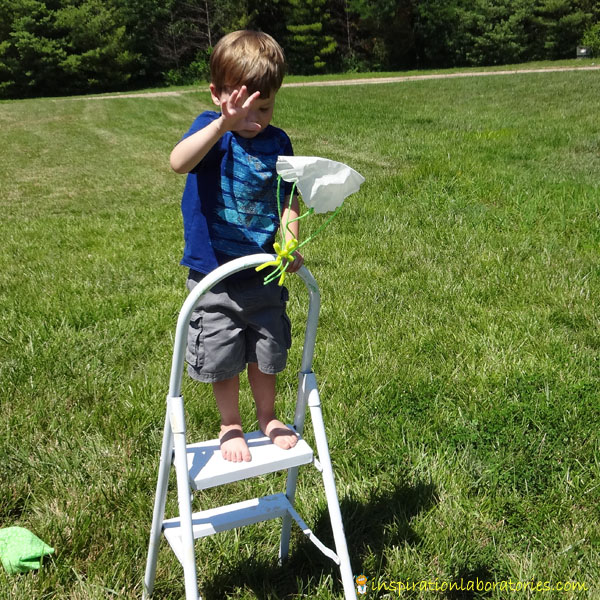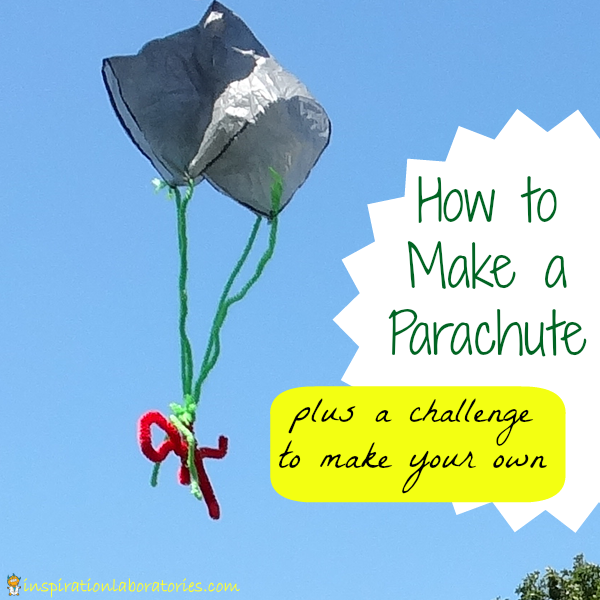How to Make a Parachute
Learn how to make a parachute by following a few easy steps. I give you material and design recommendations. Then, it’s time to test the parachutes. Set up an experiment to see which parachute design is the best.
How to Make a Parachute
Learning how to make a parachute is pretty simple. A toy parachute typically has three parts: the parachute material, strings, and a person or weight.
The choice of material for each part of the parachute is really up to you. The parachute material itself could be made from plastic, cloth, or paper. We experimented with plastic shopping bags, cotton cloth, tissue paper, and a coffee filter.
Each of our parachutes is the same size. I cut an 8 inch square out of a plastic shopping bag, a piece of cotton cloth, and tissue paper. The coffee filter was about 8 inches in diameter.
For our strings, we used yarn. Aiden helped cut lengths of yarn of about 8 inches. {I asked him if he wanted the strings 8 inches long or 12 inches long. The answer wasn’t really important, but it did give him some ownership over the design process.}
I cut holes in the corners of each parachute top and tied the string on. I used another short piece of string to tie the 4 strings together and to tie the strings to the weight. I covered the tissue paper holes with tape just to be on the safe side.
I made quick pipe cleaner people to use for our weights. Aiden gave them all names. (I love how he adds a pretend play element to even our science projects.)
Parachute Experiment: Testing Different Parachute Designs
After making our four parachutes, it was time to test them. We headed outside with a step ladder and let each one of them fall.

Here’s a video of the parachutes. Which design do you think was best?
What else could you test? How about these ideas?
- parachute material type (cloth, paper, plastic – even different types within these)
- string type (yarn, ribbon, twine, etc.)
- parachute material size (Do larger parachutes work better? Do they result in a slower descent?)
- string length
- type of weight or amount of weight (Change the person/weight attached to the strings. What happens?)
- height of release
- wind conditions
Your Turn
This month’s challenge is to make a parachute with your kids. Try different designs – which one works better? Can you make a parachute that will allow an egg to safely land? Experiment and have fun! Take a picture a share it with me on Facebook or Instagram.
Subscribe to the Inspiration Laboratories newsletter. Each issue has exclusive hands-on science explorations for children, a recap of our latest activities, and special resources selected just for you!




Leave a Reply